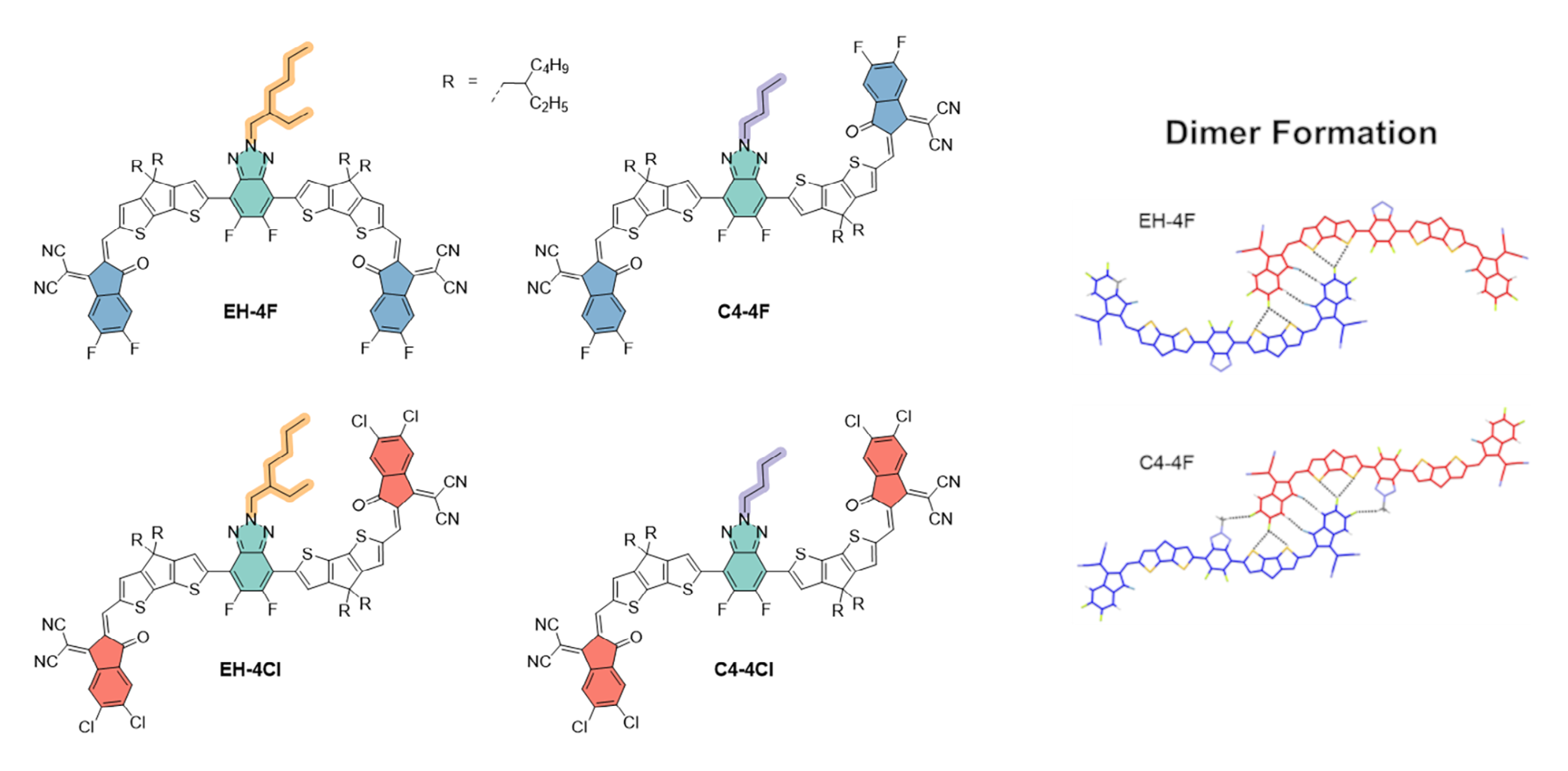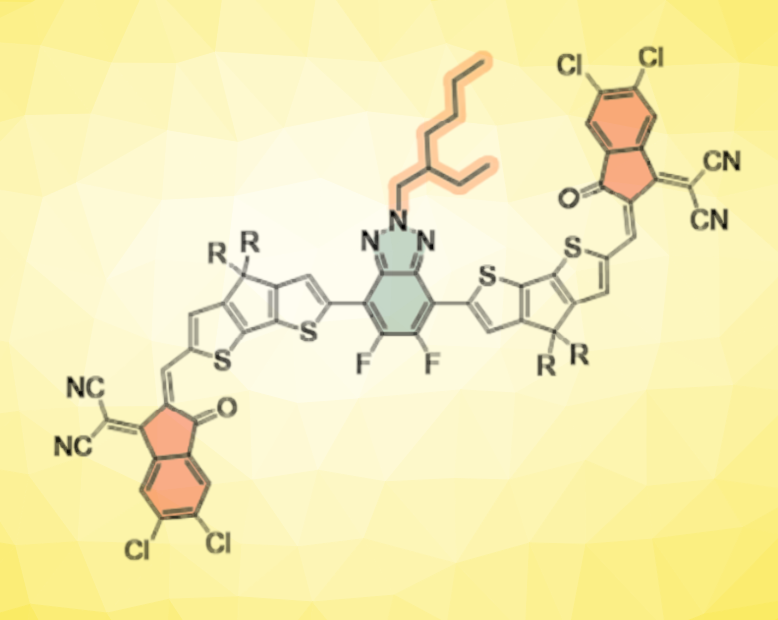The power conversion efficiencies of organic solar cells (OSCs) have been significantly improved over the past few years. Currently, highly efficient OSCs often rely on fused ring electron acceptors (FREAs). This type of electron acceptor can require complex ring-closure reactions, which limits practical applications.
Nonfused ring electron acceptors (NFREAs) are promising for the commercialization of organic solar cells (OSCs) due to their simple synthesis. So far, NFREAs have been used to achieve power conversion efficiencies (PCEs) of over 16 %. Understanding the packing information could be useful to further boost efficiency. However, it can be challenging to obtain single crystals of NFREAs that are suitable for X-ray diffraction, e..g, due to large branched side chains.
Chunhui Duan, South China University of Technology, Guangzhou, China, and colleagues have developed four A–D–A’–D–A type NFREAs (called EH-4F, C4-4F, EH-4Cl, and C4-4Cl; pictured below on the left), combining end-group halogenation and side-chain engineering. The team obtained single crystals of the NFREAs through a solvent diffusion method. They found that multiple intermolecular S⋅⋅⋅F interactions between cyclopentadithiophene and 5,6-difluoro-3-(dicyanomethylene)indanone units can cause an unfavorable dimer formation (pictured below on the right) in EH-4F and C4-4F. This dimer formation can lead to ineffective π–π stacking. No such dimer was observed in the crystals of chlorinated counterparts.

The team also found that side-chain engineering could be used to manipulate the molecular orientation. The shorter n-butyl side chain resulted in a closer molecular packing in C4-4Cl, but EH-4Cl with its 2-ethylhexyl side chains showed enhanced face-on orientation in thin films, which is favorable for vertical charge transport and reducing charge recombination. As a result, a PCE of 13.0 % was obtained for EH-4Cl-based OSCs. Overall, the work highlights the importance of molecular packing and orientation control for high-performance A–D–A’–D–A type NFREAs and could provide useful insights for the development of high-performance, low-cost acceptor materials.
- A–D–A’–D–A type nonfused ring electron acceptors for efficient organic solar cells via synergistic molecular packing and orientation control,
Wenkui Wei, Xia Zhou, Shuting Pang, Jiadong Zhou, Xiyue Yuan, Junyu Li, Yuting Chen, Langheng Pan, Zengqi Xie, Hongbin Wu, Fei Huang, Yong Cao, Chunhui Duan,
Aggregate 2024.
https://doi.org/10.1002/agt2.488




